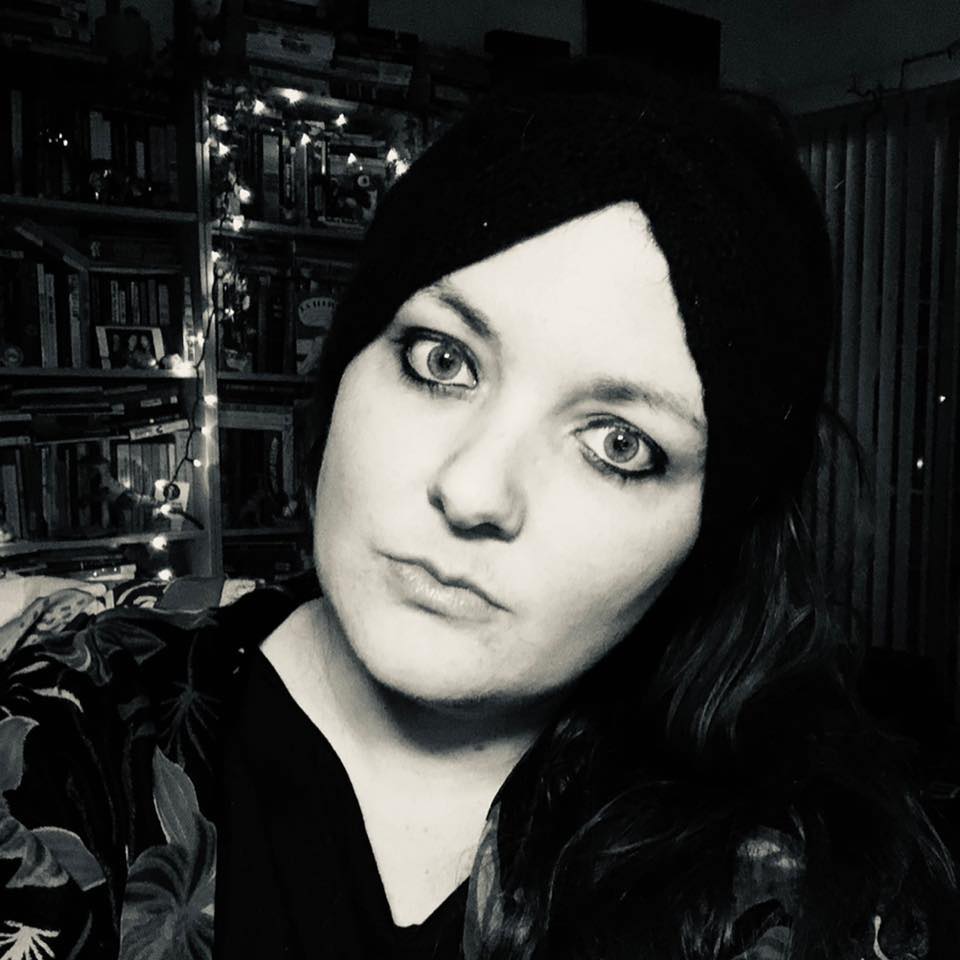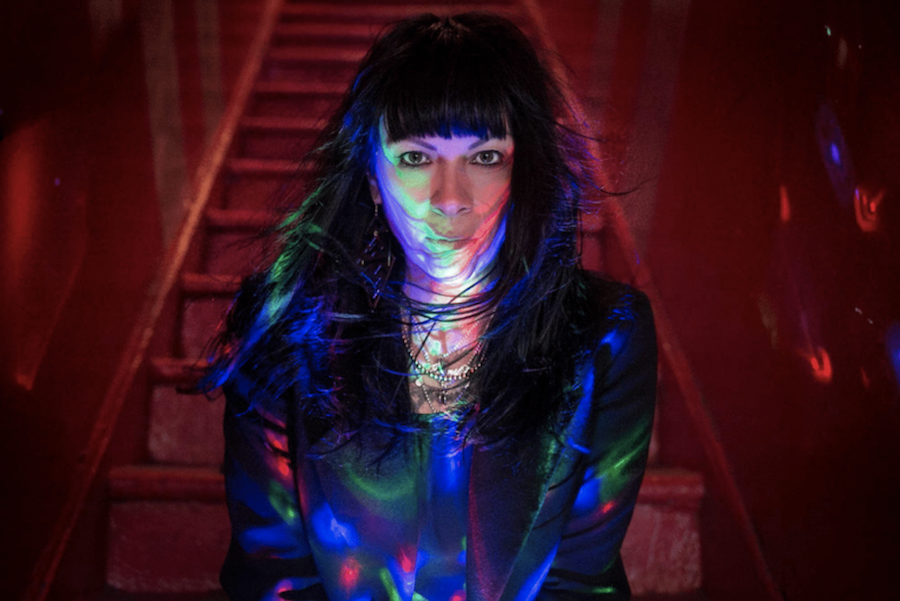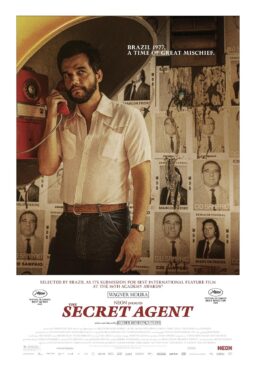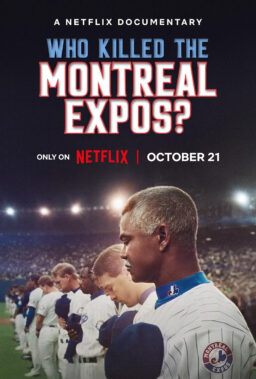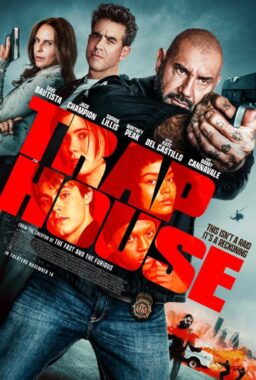Prolific feminist filmmaker Jennifer Reeder first picked up a camera while studying performance at Ohio State University. While attending the Art Institute of Chicago in the 1990s, she began creating dozens of DYI video art with a distinctly riot grrrl-bent. These include the anarchic short film “White Trash Girl,” with Reeder herself in the titular role of a rowdy young woman who is distinctly in control of her own life, despite being born into a situation others would deem undesirable, and uses her powers to help others.
Many of her shorts and feature films interrogate the complex lives of teenage girls using flights of magical realism, often borrowing aesthetics from after-school specials, music videos, and horror films. Reeder’s films often build on each other, sharing everything from settings and characters to certain lines of dialogue or plot points, though they are often re-calibrated for a different emotional impact on each subsequent reuse. Her singular work has been screened in film festivals and art galleries around the globe, including at Sundance, Berlin, Tribeca, Rotterdam, London, SXSW, and the Venice and Whitney Biennales.
In her most recent film “Perpetrator,” which debuted earlier this year at the Berlin Film Festival, Reeder blends elements of coming-of-age tropes with body horror and righteous female anger to create a tone distinctly her own. Kiah McKirnan plays Jonquil “Jonny” Baptiste, a rebellious teenager sent to live with her mysterious Aunt Hildie (a delightfully twisted Alicia Silverstone) just before her 18th birthday. Just as Jonny begins a literal transformation she does not understand, and girls attending her school start to go missing, although no one but the other girls seem to care. Along with a few of her new classmates, Jonny embraces her newfound strength and hunts down the culprit before they strike again.
For this month’s Female Filmmakers in Focus column, RogerEbert.com spoke to Reeder at the Music Box Theatre Lounge in Chicago, discussing the stridently feminist worlds of her films, finding gothic filming locations in Chicago, working with the iconic Alicia Silverstone, her many inspirations, and more.

I actually did a crash course and watched 32 of your movies in the last five days.
Holy mackerel.
I found all your shorts on—
Criterion Channel or Vimeo?
I watched the ones that were on Vimeo, and then I watched the Criterion Channel ones. I loved the ’90s DIY video art shorts.
I hope you got a chance to watch “White Trash Girl.”
Yeah. I loved it.
“Perpetrator” is really related to “White Trash Girl.” It’s kind of a different version of it.
What I noticed watching so many of your films from “White Trash Girl” all the way through your features is that there are many things you pull through, but sometimes you’ll take something you did before but completely change the emotional tenor of it. I would love to hear how you keep all of that in your head and when you know you want to call back to something.
Looking back even to “White Trash Girl,” I mean, on some level, I feel like I keep making the same film over and over again. Which is totally fine with me. Sometimes, I wonder about someone like Ang Lee. How did Ang Lee do both “The Ice Storm” and “Hulk”? You know? Those feel so different. I feel unable to unlink my films. They’re all related to each other. They’re not all necessarily like siblings, or cousins, or, but they’re all related. And oftentimes, something that happens while making one of them—it could be at any point in the process—will give me the idea for the next one. Maybe it’s a character or a line. I like, then, making even more pointed moves, like naming characters the same or recycling a line of dialogue.
“It’s worse than it looks.”
Exactly. Sometimes it’s different when it’s going from a short to a feature, because the shorts have not had such a robust life necessarily as the features. But oftentimes, it can be one feature to the next. So that they actually are linked together and that there is this trajectory through the whole thing.
It wasn’t until I was honestly in post-production with “Perpetrator” that I was like, oh my gosh, I just literally remade “White Trash Girl.” You know her. I mean, Jonny’s blood was always going to be magical, you know, and obviously White Trash Girl’s bodily fluids are magical. She’s another outsider or misfit just like Jonny. And thank goodness, you know, Kiah McKirnan agreed to play Jonny and I was happily behind the camera because I am White Trash Girl, you know, I play White Trash Girl. Now I appreciate being behind the camera.
But it’s purposeful. I feel even as a consumer of films or even literature or music, I like following creators who have a vision. You can still create really productive chaos within a world that is that distinct to that person. And that feels right to me. I mean, when I made “White Trash Girl,” I didn’t sort out to say 20 years from now. I’m going to make another film that’s going to be related to this, and people will understand what the Jennifer Reeder world is, you know? I just couldn’t help. I just was like, I gotta take that nugget and make that the next one. It’s like making bread. You know, it’s like my little starter.
How much do you think the righteous Riot grrrl anger is still in your work? You really feel it in the video shorts, obviously, but even in “Perpetrator,” she’s reading a zine.
“Cunty Slut.”
Yeah.
We invented that zine. But that refers back to a scene from “Knives and Skin,” which is also a reference to the short “Blood Below The Skin,” where a character says, “What are you a bitchy tease or a cunty slut?” So I knew that I wanted to make the zine called “Cunty Slut.”
Even though there were problems with third-wave, Riot grrrl feminism and its kind of lack of intersectionality, it’s in my DNA still, that Riot grrrl sensibility and that DIY sensibility. So fast forward to “Perpetrator” and working with a professional DP and working with professional actors and having the budget that we did not have in those days and all of that. But, when I’m driving to set and driving back from set, I still feel like this scrappy junkyard girl who has somehow convinced all of these people to get real weird with me.
One thing that I love, pretty much in all of your films, is that the girls always band together. That there are girls finding strength together. Whether it’s pushing back at grown people or pushing back the teenage boys. Because I feel like, universally, teenage boys are still often shitty. What do you think is so universal about the girls to the front movement?
The secret that the patriarchy doesn’t know is that all of those moronic men who are so desperately holding on to their power and to the privilege of the patriarchy, they don’t realize at the end of the day women talk to each other. Girls talk to each other.
Whisper networks.
Yeah. We mobilize. The mean girl, in my opinion, for the most part, is a myth. The mean girl is a defense mechanism. At the core of the mean girl is a girl for whom female friendship is a survival strategy. So we talk to each other. We band together. There is a real sisterhood that we can mobilize, and in those numbers and in those lines of communication, we have power, and we will quietly but consistently gain the power back.
Also, it’s not always quiet whispers. There’s power in kicking in the basement window, and it’ll be because we are consistently not allowed to come into the house from the front door. There’s many ways to get into the house, and we’ll get into the house. I mean, it can be exhausting, consistently kicking in the basement window, but what’s the other choice?
In my real life, I value my friendships with the women in my life, the feminists in my life. I value my relationship with my 92-year-old mother. I am someone who sees that other young women, especially the ones who have been in my films, they feel the same way. What the patriarchy believes—and I’m being very broad here—but what the patriarchy believes keeps the patriarchy in power is that women hate each other. And they can keep believing that. That’s fine if that’s what you want to believe.
Not to spoil the movie, but that very last sequence is really powerful. It reminded me a little bit of “Practical Magic,” where they just all get together.
I wanted that to be the end. I really wanted it to have that sense of empowerment. Whether it’s that iconic poster for “The Craft,” with those girls together. Or, whether or not you are a fan of Taylor Swift, but that Swift Army. That’s real. It’s not a fluffy “Aren’t they cute?” banding together. I wanted to have an ending that felt that empowering, and that suggests there’s a new pack on the horizon.

For the lead Jonny—where did the name Jonquil come from?
There was a girl that I went to high school with whose real name was Carrie, but who, in the senior year of high school, wanted to be called Jonny. She wanted to be called Jonny because of Johnny Marr from The Smiths. She was so cool in her embrace of the masculine and the feminine.
So I really wanted to give [Jonny] like a boy’s name. So I had been thinking about Jonny or like, Reggie or Tommy. Then it occurred to me that I wanted to name her Jonny, but from Jonquil, which is a beautiful flower. Then, naming her Jonquil Baptiste, it could end up like John the Baptist, which is an interesting allegory.
In this film, you have all these beautiful front doors and the very old cemetery. How did you find those locations, and what you’re hoping to show about Chicago?
So the funny thing is that when I was writing the script, originally, it was set in New Orleans because I’ve shot so much stuff in the Midwest. I talk a lot about being Midwestern and even having a Midwestern aesthetic. So I thought, I’m gonna bust out of this. I’m going to shoot someplace that feels very not Midwest in a film noir way with architecture that has its own aura. So much of the US is so brand new, you know, comparatively, so I thought that shooting in New Orleans, or maybe even shooting in Savannah. Just a very haunted kind of place, with very particular architecture that seems more kind of European than American. I felt like that could be really fruitful.
But both of the cities have changed a lot, infrastructurally, during COVID. A lot of casts and crews moved out. Also, honestly, the more we were thinking about it, the more it felt like maybe because they both have such strict abortion laws, shooting in Louisiana or Georgia might not be the right decision for a film like this. So the producers were like, we’re gonna pivot. Let’s shoot someplace with a good tax credit. What about Utah? I was like, does this film seem right for Utah? It doesn’t seem very Utah to me.
Then I thought, why don’t we shoot in Chicago? I can sleep in my own bed at night, and you’ll have a happier director. Also, because I’ve shot so many films here, I knew that we could find a really great supporting cast and crew here. I knew that I was going to cast Audrey Francis again and Tim Hopper again. I knew we could tap the high schools for great young people. I wanted to work with Ireon Roach again, who plays Elektra, who was Charlotte in “Knives and Skin.” So everyone decided let’s do it.
And then, you know, going about working with John Roxas and RoxStar Locations. Maria Roxas is like Chicago location royalty. I can be very particular, and if I say I want a really huge, old vintage cemetery, they can find it. We shot those scenes on the north side at Bohemian, which is gorgeous. I loved shooting there. Some of the crew were very superstitious and did not like shooting in that cemetery, but I really loved it. Then we also filmed in the North Park Fieldhouse for the high school. So that wasn’t a real high school; it’s one of the park district field houses that had a really great vintage vibe. It had an auditorium with a big red curtain.
It was important to me that if we weren’t going to shoot in locations that actually had that age to them, then in Chicago, we had to find buildings that were local that had that kind of a gothic aura. So, Hildie’s apartment was in Ukrainian Village. At the very beginning, when we see her walking down the sidewalk in the background, there’s a Ukrainian flag, which felt good to align ourselves in the right direction globally with that little nod. But the architecture of that block of buildings feels very distinctly Chicago. It’s all tall, skinny buildings with that great stone. They all feel very gothic.
You feel the history of those buildings.
That building, in particular, the third floor had already been gutted. The reason we were able to shoot on that first floor was because they hadn’t gutted it yet, so we could do whatever we wanted, which felt right. In the basement of that building were the remnants of a speakeasy.
Oh, that was so cool. That’s amazing.
It was freezing. There was no heat or running water. I mean, poor Alicia Silverstone, who maybe hadn’t checked her weather app before she arrived in Chicago in March with no winter clothes. It was a freezing location, but really, really great.
At some point, we did shoot some footage of the Chicago skyline, and we had some train footage, but we just took all of that out. It just felt like it was too on the nose. It didn’t belong in a film like this. I’ve never really shot that way, where you have these traditional establishing shots like that.

I also wanted to ask, obviously, about Alicia Silverstone. It’s such a different role for her, unless you’ve seen “Vamps,” in which case it fits nicely with it. But I think a lot of the idea of who we should Silverstone is is still so wrapped up in “Clueless,” which is totally one of the great comedic performances. She gets to do something really different with this role and really be sort of borderline sinister because you’re really not sure for quite a bit of the movie. How early on did you know you wanted her for this role?
Pretty early on. She was somebody who I was interested in for “Knives and Skin,” even. But for that one, it was better to cast everybody out of Chicago, and Marika Engelhardt, who plays Lisa Harper in that, is fantastic in the role. But I had been thinking about Silverstone for a while in a specific way, especially as it’s related to her own provenance. I wanted to cast this really powerful matriarch as someone who we have watched grow up and someone who we were introduced to as this iconic teenager, but now as this kind of mentor to a hopefully also iconic teenager in our Jonny. I wrote her that in a letter. Her team had already read “Perpetrator” and really liked it for her because it was maybe not expected. She had done a small but memorable part in “The Killing of a Sacred Deer,” so I knew that she could get weird or she was making some weird moves. So we sent her the script, and I sent her this letter that kind of outlined why I thought that she was really important.
For the role, I really wanted to pattern her after Marian Blaylock, Catherine Deneuve’s character in “The Hunger,” or even think of her in that kind of Tippi Hedren or Kim Novak sort of cool Hitchcockian blonde. Especially like Hedren in “Marnie,” who’s such a complicated villain. Or not a villain, but a woman with murky ethics. Alicia loved that and sent herself down a dinner rabbit hole, a Hitchcock rabbit hole. When she arrived on set, she was so ready to play this really slippery character who has some tough love tendencies and who feels a little unknowable. She lowered the register of her voice. She spoke slower. She articulated certain letters, like her Ss. This sort of thing. She had a ton of fun with it.
She actually brought a lot of her own clothes. She has some great Christian Siriano kind of structured black dresses, and we had talked about that. It made the wardrobe look like it cost more money than it did. But she was literally able to sort of sew herself kind of into that skin and had a lot of fun playing her. I was delighted and surprised watching her do that. She’s such a professional. In the sense that she knew what to do with all the props consistently, she knew exactly where her light was. She’s really curious, and it was fun to watch her with young actors, who were all in awe of Cher Horowitz.
When “Perpetrator” premiered at the Berlin Film Festival this past February, just the Sunday prior, her Super Bowl ad aired, where she reclaims that “Clueless” role. And the Hollywood Reporter had done a profile on her that was like, between her Super Bowl ad and “Perpetrator,” Alicia Silverstone is having a second coming or something like that. But, I mean, anybody who’s following her career knows that she works very consistently, you know? She never went away.
She asked great questions. She would ask me about some of the more slippery logic of the story, and just as I was getting ready to answer, she was like, oh, nevermind, we’re making art. I kind of love that she, and Chris Lowell, who plays Principal Burke, did the same thing. He was like let’s just get weird. Let’s make art. I like being able to work with people like that, where the trust is there. I find that actors, in general, want to make art rather than want to make commercials, literally and otherwise. Let’s make some weird moves. Let me flex.
An early germ of the story came from wanting to do a coming-of-age spin on “Cat People,” correct?
Yeah.
Both “Cat People” movies don’t necessarily have sound logic. They’re both playing with myths and mysticism.
Right. That’s what I really like. After I premiered “Knives and Skin,” I was like, alright, I’m ready to go on to the next one, and I had just rewatched the ’80s iteration of “Cat People,” and thought it was way weirder than I remembered it being. I mean, in the sense of its logic, this kind of inherited shape-shifting, the nuance of it, the weirdness of the sub-story of her being a virgin. I remember when I was a much younger person, I was really obsessed with Nastassja Kinski. I was sort of wondering where she had gone, and then I thought about how I wanted to do a shapeshifter story. But I want to do it in a way that feels unexpected, in that “Cat People” way.
I was also thinking about the questions I would get after doing press for “Knives and Skin” and even the shorts leading up to the feature, especially something like “A Million Miles Away,” that just features 22 teenagers. People would go, “Oh, God, how was it working with all those girls?” I was like, I love it. I want to keep doing it. But then I realized they think it’s awful, you know? So I liked the idea of making a story about a wild and out-of-control girl who really becomes wild and out of control. You know, she sort of takes the thing that someone else has said diminishes her agency and uses it.
This is also why I thought that her shapeshifting would be super empathetic. I was thinking, what if being overly emotional was your superpower? Because we still live in a world that’s just like, well, women can’t be president because she’ll be on her period and she’ll start a nuclear war. But let’s talk about all the petulant men in Hollywood or in politics right now. Telling a story like this, at the end of the day, I want it to be entertaining, but I also want to potentially provide a longer, more complicated conversation. I want the super cinephiles to love it. I want the genre nerds to love it. And then I want the feminist film theorists to teach it to, you know?
This is sort of a silly question, but so many of your characters often have bandages on their fingers or their heads, and as someone who almost always has a bandaid on a finger I feel very seen. What draws you to that kind of imagery?
It’s a lot about how women compartmentalize their life in general. You could ask someone, “How’s your day going?” and I could be having a terrible day, but my instinct is to be like, “Good, it’s great.” But if you have a wound that won’t heal, even if it’s a little finger wound that feels like it just won’t cauterize or scab up, either because the wound itself has agency, or it’s in a place that just keeps getting nicked and bumped or whatever, there’s no way to hide that part. So if you said, “Yeah, things are great,” but you’re bleeding out of your head, I know you’re not okay. Talk to me about what’s going on. There’s that kind of evidence of pain and trauma without having a character have to spell it all out.
Also, I think that it’s really important that we’re able to un-compartmentalize on our terms. I am a mom, and one of the things I learned early on, especially about my oldest kid, is that if I know that he’s having a bad day, the last thing I need to do is bug him to see what’s going on. The middle one explodes with whatever’s bothering him, even to the point where I’m like I didn’t ask you how your day was. But the other one sort of holds things so deeply. When he was much younger, it would bother me, because I wanted him to talk to me, you know, and I didn’t think it was good for him to hold it in. But then I realized he has to do it on his own terms.
So I think that’s really important for any human. But it can be a survival strategy, for women to be able to un-compartmentalize on their own terms, and be emotional on their own terms, and rage at the wrong time if need be. That was sort of the germ of “A Million Miles Away.” I wanted somebody to have a breakdown at the worst time. And to just sort of own it and then to have those girls be like, okay, we’re going help her. And not just in a way that’s kind of like, okay, we’re going to help her compose herself before she has to go back out to the world, but also to actually help her and give her dating advice.
That was really powerful to have the students helping the teacher.
I set those students up as though they’re all just a big pack of mean girls, but then you realize no, that’s what the armor that they have. There’s a great line in the film “Dolores Claiborne,” where the woman Kathy Bates is working for says something like, “You know, sometimes being a bitch is the only thing that woman has.” It’s delivered very melodramatically, but it’s exactly the same as the myth of the mean girl, and sometimes being a mean girl is all a girl has.

Are there any women directors or artists who inspired you at the beginning of your career or continue to inspire you, or maybe just you think not enough people know about them?
Oh, that’s such a good question. I mean, honestly, because I came out of that kind of art world, there’s this performance artist, Linda Montano, who’s still living and working, who was a visiting instructor of mine at Ohio State when I was an undergrad, and has who taught a performance class where we had to videotape our performances. That’s where I first picked up a video camera, and it was like recovering a phantom limb. She was known for doing these kinds of durational, year-long, seven-year-long art projects. That kind of a thing. She was deeply influential to me.
I think of somebody like Martha Coolidge, who directed “Valley Girl,” which I dearly, dearly love. I would cast, you know, even contemporary Nicolas Cage, who I think is making some interesting decisions, to be in any film simply to reprise Randy. I would name him Randy. Also, I was even mentioning Chantal Akerman’s “Jeanne Dielman” to somebody recently who was in the film world, and it was like, “Who and what?” I assumed that everyone knew who Chantal Akerman was. Lynne Ramsay is not a lesser-known filmmaker or Andrea Arnold. Maybe because there are British filmmakers, not everybody has seen “Fish Tank” or not everybody has seen “Morvern Callar.” I love what Lynne Ramsay did with “You Were Never Really Here.” There’s also some younger, up-and-coming filmmakers like Rose Glass, whose film “Saint Maude” is just brilliant. Or Prano Bailey-Bond’s “Censor,” which I think is super special. I think somebody to watch is Nikyatu Jusu, whose film “Nanny” is also special.
I always go back to my kind of godmothers, some that I knew and then some I’ve never met, like Martha Coolidge. I feel indebted to her. Even somebody like Allison Anders. I’m thinking about the first time I saw ”Gas Food Lodging” and how special that was, but it was even more special knowing that a woman did that. When I was making “White Trash Girl,” there were so few American women doing indie films. There was Julie Dash, Allison Anders, Martha Coolidge, and Penelope Spheeris. It seemed like there was only a handful, even though obviously there was more than that. It was really hard to figure out how to get there. How to do that for myself, you know? Now there are more, but I still don’t want to forget the originals and what I owe to them.
Also, someone like Maya Deren. I always like to say that I’m like the impossible love child of Maya Deren and Steve McQueen. Maya Deren in the sense of coming to filmmaking through dance partially; I was a ballet dancer for a long time. And then Steve McQueen, who came to feature filmmaking from the art world, which I also did. If we were at my house, you would see next to my computer, there’s a little handmade Maya Daren doll that actually won an award from the Chicago Underground Film Festival. You can find both “Meshes of the Afternoon” and “At Land” on YouTube, so sometimes, if I need some inspiration and I’ve got an extra 20 minutes, I need a little dose of my religion. I don’t think she’s underrated, but when someone goes and seeks out those brilliant films that she did, you’ll realize what a pioneer she was in surreal filmmaking and that she should have done so much more.
The last person I will say, who I also think is sadly forgotten today, is the art photographer Francesca Woodman. Her surreal moves in her photography are just still so astonishing. I will never make a lookbook that does not include some of her photographs. She died by suicide when she was 22, so very few of her photographs exist because her parents had, for better for worse, kept close tabs on her estate. So someone like her, I think people should look her up, be in awe, pay homage.
“Perpetrator” is now playing on Shudder.
